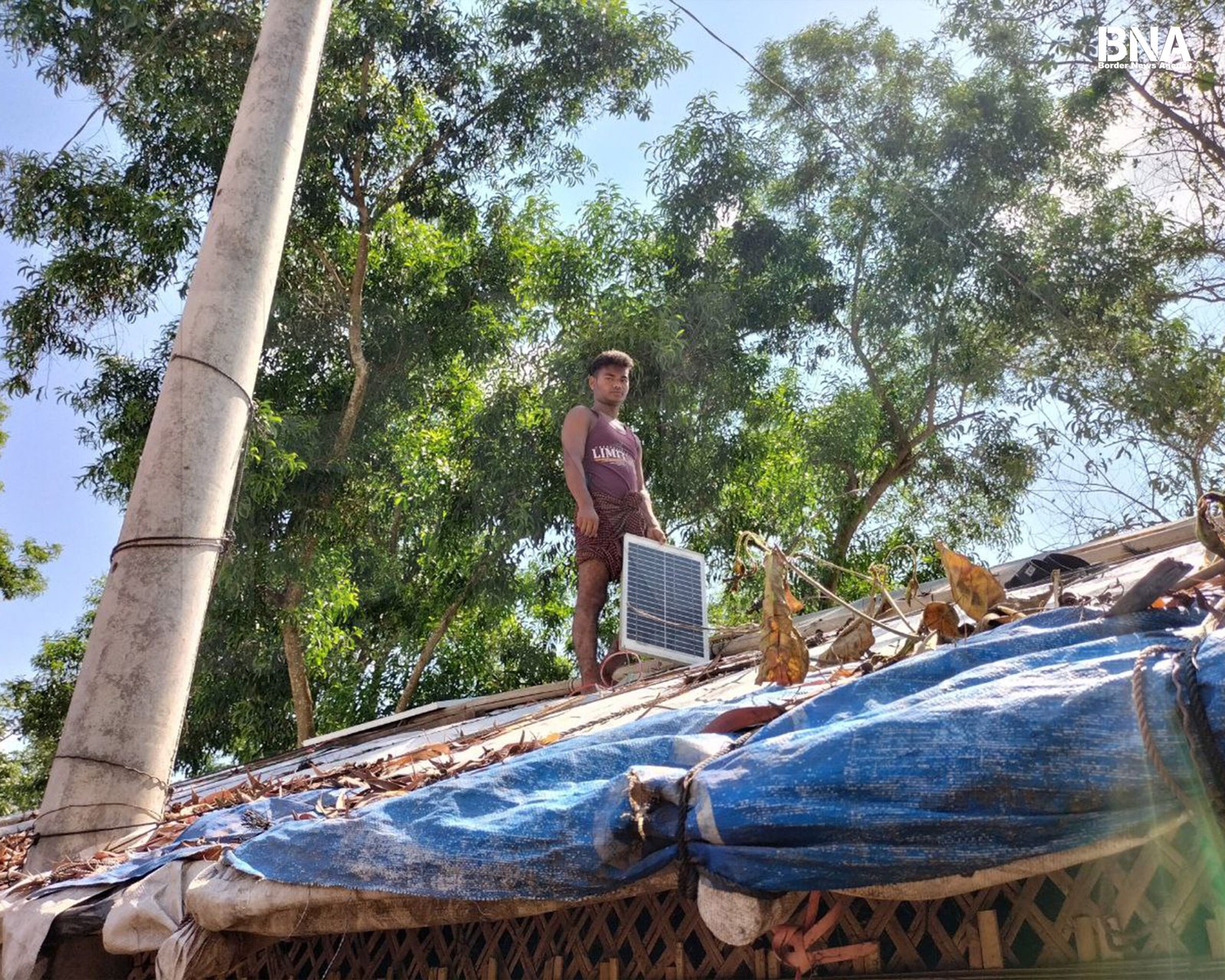Border News Agency
Cox’s Bazar, Bangladesh 3 May 2025
As temperatures soar during the relentless hot season, hundreds of thousands of Rohingya refugees living in the overcrowded camps of Cox’s Bazar are enduring unbearable conditions in shelters made of tarpaulin and bamboo. With little to no access to electricity and cooling facilities, the heat has become a daily struggle, further worsening the already dire humanitarian situation.
The Rohingya refugees, who fled brutal persecution and violence in Myanmar, now face new forms of hardship. Most of the shelters designed to be temporary offer little protection from the scorching sun. Made from thin plastic sheets and bamboo frames, the shelters trap heat inside, making them feel like ovens during the day.
“There is no electricity, no fan, and we cannot sleep at night because of the heat,” says Mohammad Ismail, a father of four living in Kutupalong refugee camp. “My children cry and sweat all night. We can’t even afford to buy a solar fan.”
While a small number of families who can afford it have managed to install solar panels or use batteries to power small fans, the vast majority of refugees rely only on handheld fans or simply endure the heat. The cost of basic solar systems is far beyond the reach of most families, many of whom survive on limited humanitarian assistance.
For elderly people, pregnant women, and those with health conditions, the extreme heat can be life-threatening. Health workers in the camps report a sharp rise in cases of dehydration, heat exhaustion, and skin diseases during the hot season. Children and older adults are especially vulnerable.
“In these temperatures, our patients, especially the elderly, are facing serious health issues,” says a community health worker in Camp 8E, who asked not to be named. “We urgently need more shaded areas, improved shelter materials, and access to electricity to reduce heat-related illnesses.”
In addition to health concerns, the hot season disrupts daily life. Many residents are forced to stay indoors for most of the day to avoid the sun, but their shelters provide little relief. Women, in particular, face additional challenges in maintaining privacy and hygiene in cramped, overheated spaces.
Aid agencies have acknowledged the problem but say that limited funding, restrictions on infrastructure upgrades, and the sheer scale of the camp population make it difficult to provide widespread energy access or climate-resilient shelter.
Humanitarian organizations are calling for increased international support to help upgrade shelters, expand access to renewable energy, and introduce climate-adaptive solutions for the camps. They stress that as the climate crisis deepens, such challenges will only intensify, and without urgent action, the most vulnerable will continue to suffer.
Despite the difficult conditions, Rohingya refugees continue to demonstrate resilience and strength. Yet as temperatures climb higher each year, their survival depends on more than just hope nit requires sustained global attention and meaningful action.






